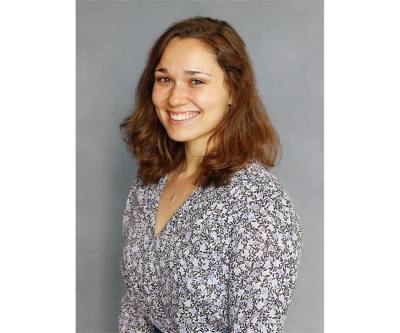“During my grade school, there was not a single year that passed in which I didn’t have a Black teacher,” Manning said.
Manning’s son will enter kindergarten at Riojas Elementary School in the fall. Currently, Riojas Elementary has zero Black teachers on staff. In a March 4 Pflugerville ISD board workshop, four community members, including Manning, addressed the impact this disparity has on the school’s student population and, by extension, the message it sends to the greater Pflugerville community.
“Seeing Black Americans as authority figures engenders respect,” Manning said. “The earlier this is learned, the more ingrained it becomes.”
Black students with Black teachers are more likely to graduate high school and attend college, and skills in both reading and math increase, Manning said. Black students are less likely to experience aggressive or excessive disciplinary action with Black teachers compared to non-Black counterparts, he added.
Yolanda Miller is a Riojas parent and said the lack of Black teachers is a major concern for the entire community, particularly when teacher demographics are not reflective of the student body.
The demographics of Riojas’ staff is reported at 0% African American, 27% Hispanic and 70% white, Miller said. Citing the 2019 Riojas campus improvement plan, the campus’s goal is to more closely match its student population by reaching an 11% African American, 31% Hispanic and 38% white staff demographic breakdown.
Miller said she understands and acknowledges efforts made at the district level to increase diversity among teachers and staff in recent years. However, she said those efforts do not minimize the issues continually imposed at the campus level.
“Riojas has flown under the radar for too many years,” she said.
None of Riojas Elementary’s hiring panel is Black. The necessary first step to addressing this diversity proactively is through establishing a diverse hiring committee for the campus, Miller said. She added the district can, and ought, to use teachers from different campuses to create a diverse hiring panel and achieve the racial equity reflective of the student population.
“Creating a diverse hiring committee can yield a thoughtful, intentional hiring practice that is open to a wider variety of people,” Miller said. “To open one’s mind to this concept, it requires diversity and inclusion training.”
Molly Cohen said that, while she is a white mother with white children, the presence of Black teachers is especially beneficial to Black students, but to all students, as well. Having Black authority figures and teachers helps reduce stereotypes, prevent unconscious bias and prepare students on how to succeed in a diverse society, she said.
Cohen said she did not have a Black teacher or professor until her senior year of college. The lack of representation for Black individuals across industries can adversely affect what career paths and accomplishments Black students strive for, if the representation in those fields is not present, she said.
“We owe it to ourselves and, more importantly, to our children, to have diversity represented in our teachers in order to give our kids a brighter, better and safer future,” she said.
Resident Amy Brown said that in a February PfISD meeting with human resources representatives, officials said PfISD has doubled the number of Black teachers districtwide, more closely reflective of the community’s composition. However, Brown said the accomplishments of the district as a whole “obscures the variation that occurs at the school level.”
Data obtained through a public information records request reported that, going back to the 2012-13 school year, Riojas Elementary did not have any Black teachers on staff until the 2020-21 academic year, Brown said. That teacher left shortly after hiring, officials confirmed in the February meeting.
The ongoing lack of representation points to a potential disconnect between the values of PfISD and the Pflugerville community as a whole, Brown said.
Her family chose Pflugerville specifically for its diversity. All students, but especially Black students, are implicated by the lack of diversity among teachers.
“When the youngest among us do not see the faces of their neighbors and friends reflected among their teachers,” Brown said, “what messages are we sending about who gets to be an authority figure? About whose voices are worth listening to?”





